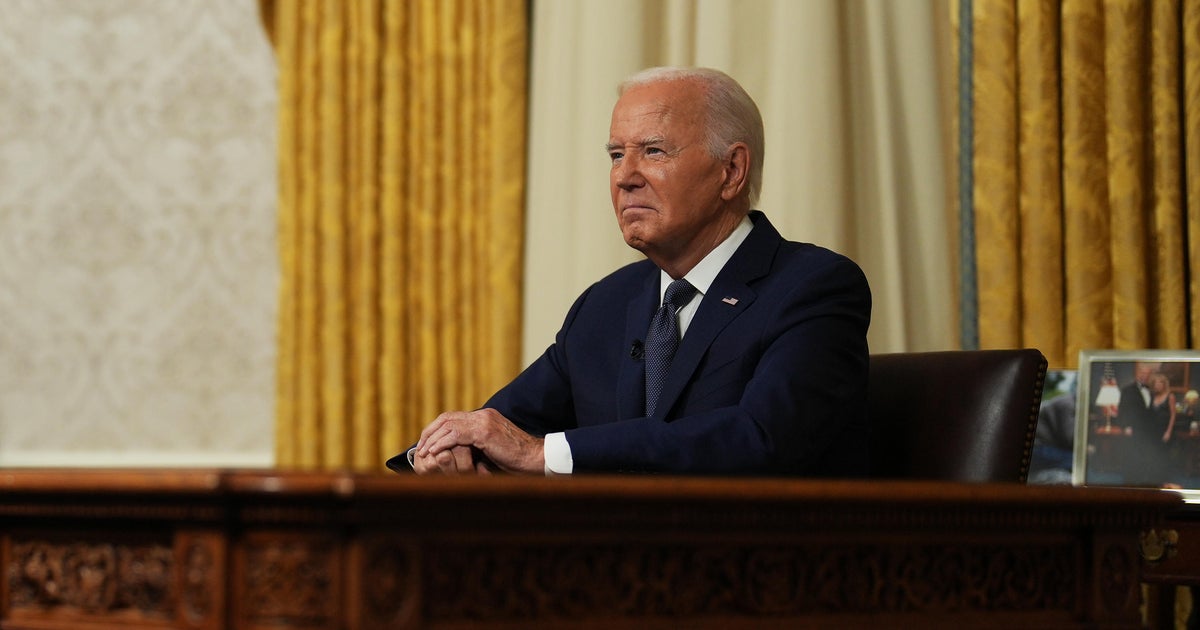Federal agents sent to Portland in 2020 were "unprepared" to quell unrest, watchdog finds
Washington — Hundreds of federal law enforcement agents who were deployed to Portland amid civil unrest last summer lacked proper training and equipment, a new report from the Department of Homeland Security's (DHS) internal watchdog revealed.
Under orders from the Trump administration, federal agents were sent to Portland in July 2020 to quell violent clashes that rocked Oregon's largest city in the aftermath of the killing of George Floyd in Minneapolis.
In the report released Wednesday, the department's Office of the Inspector General (OIG), led by Joseph Cuffari, found that DHS did not have a "comprehensive strategy" in its deployment of 755 federal agents, an operation that carried a price tag of $12.3 million. The 28-page document, intended to "assess the authority, preparation, and activities of DHS law enforcement officers deployed to protect Federal property," found federal agents were "unprepared" to communicate with other officers to protect federal buildings.
"Specifically, not all officers completed required training; had the necessary equipment; and used consistent uniforms, devices, and operational tactics when responding to the events in Portland," the report said.
Officers from the Federal Protective Service (FPS), Customs and Border Protection (CBP), Immigration and Customs Enforcement (ICE) and the U.S. Secret Service (USSS) surged to Portland between June 4 and August 31, according to the report, in a mission the Trump administration deemed "Operation Diligent Valor."
The inspector general warned that "[w]ithout the necessary policies, training, and equipment, DHS will continue to face challenges securing Federal facilities during periods of civil disturbance that could result in injury, death, and liability."
Some DHS officers lacked equipment, including "shin guards, face shields, and protective eyewear." Agents without proper gear faced attacks from rioters who employed "lasers, fireworks, and Molotov cocktails" and "projectiles including frozen liquids, unknown chemicals, feces," the report found.
Agents also reported challenges with radio communications, "such as the inability to communicate with DHS officers from other components."
Certain officers interviewed by the Office of the Inspector General "questioned their involvement in the operation due to a lack of riot and crowd control training." The report said the "lack of training in these areas may increase the risk of injuries to officers and the public."
Despite equipment shortages and incomplete training, the inspector general said "many DHS officers stated that efforts to protect the facilities were effective." According to officials from the FPS, the cost of damages to the federal courthouse in downtown Portland totaled approximately $1.6 million following the civil disturbances.
After weeks of violent clashes that included tear gas being deployed on protesters and dozens of arrests, the federal agents began withdrawing at the end of July.
Chad Wolf, who was acting DHS secretary at the time, and other Trump administration officials were sued last summer by Oregon's attorney general following what state officials said were illegal seizures of protesters. One protester said unidentified officers in military fatigues loaded him into an unmarked van without explanation and transported him to a holding facility for questioning.
Appearing before the Senate Homeland Security and Governmental Affairs Committee in August 2020, Wolf maintained that federal agents were appropriately trained in de-escalation, with experience in quelling riots at immigration detention facilities. "Our law enforcement officers are not the Gestapo, storm troopers or thugs," Wolf said during his testimony.
DHS officers made 62 arrests during the Portland operation, according to the OIG report, while local police declared 25 riots and conducted nearly 700 arrests.
Last year, critics questioned the department's authority to deploy federal officers to Portland, decrying the use of cell phone surveillance, uniforms and the less-lethal devices. The inspector general found that DHS had the legal authority to designate and deploy its law enforcement officers from additional agencies to assist the FPS, but did not adequately prepare its officers.
The report revealed officers deployed in front of federal facilities in Portland did not wear consistent uniforms, with some in solid attire and other officials donning camouflage. "Wearing consistent uniforms would present a unified front, but DHS did not establish a uniform for cross-designation operations," the report said, responding to public concerns about the blurring of law enforcement and military personnel.
The inspector general issued two recommendations to DHS: implement a plan to improve preparedness for similar future deployments, and have the FPS director establish contingency plans – including necessary equipment – for responses to disturbances at high-risk federal facilities.
"The circumstances in Portland, OR were particularly challenging," wrote Jim Crumpacker, the DHS liaison to the inspector general's office. The agency cited "the persistence" of violence directed at law enforcement and restrictions on local law enforcement cooperation, but concurred with both recommendations. In its response, the department said it is "committed to improving its public order policing capability" with improved measures to safeguard federal facilities and personnel.
Cuffari, the inspector general, is scheduled to testify before the House Homeland Security Committee on Wednesday, where he is likely to face probing questions from lawmakers on his office's oversight.




